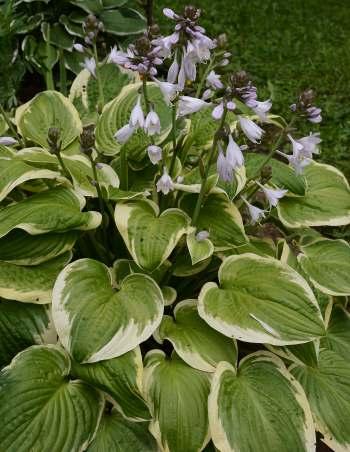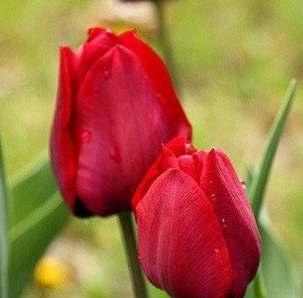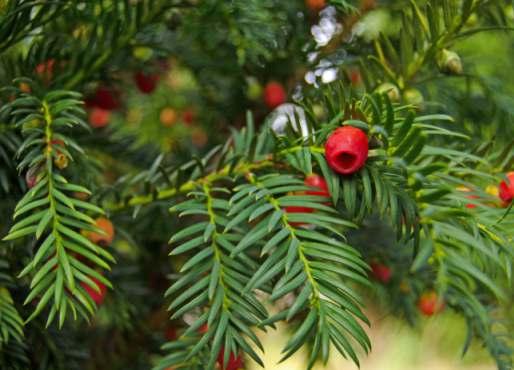
3 minute read
PA State Ext.: Poisonous Plants
PennState Extension | https://extension.psu.edu/ Many ornamental plants can be harmful to horses, dogs and cats.
Did you know that tulip, hyacinth and daffodil bulbs can damage a dog's mouth and esophagus, leading to drooling, vomiting, severe diarrhea and even abnormal heart rhythms? Asiatic and Japanese lilies can cause severe kidney failure in cats. Just one or two leaves can kill them. Be sure to keep bulbs out of reach of your animals before planting them.
The following is a list of common spring and summertime plants and the dangers posed:
Rhododendron – Vomiting, diarrhea, hypersalivation, weakness, coma, hypotension, CNS depression, cardiovascular collapse and even death. Azalea – Vomiting, diarrhea, hypersalivation, weakness, coma, hypotension, CNS depression, cardiovascular collapse and death. Crocus – Excessive salivation, abdominal pain, diarrhea, vomiting, gastrointestinal disorders, lack of appetite, tremors, convulsions, seizures. Gladiola – Salivation, vomiting, drooling, lethargy, diarrhea. Gladiola is a great flowering plant in the garden, and they are more popularly used in floral arrangements, but since it is a corm (bulb), it is toxic to dogs and cats (not seen much so it may not present much of a problem). Hosta – Vomiting, diarrhea, depression. This plant is toxic to both dogs and cats.
Morning Glory – Gastrointestinal upset, agitation, tremors, disorientation, ataxia, anorexia, hallucinations.
Oleander – Colic, diarrhea (possibly bloody), sweating, incoordination, shallow/difficult breathing, muscle tremors, recumbence, and possibly death from cardiac failure. The plant is pretty, and poisonous. It can severely affect cats, dogs, and even horses. All parts contain a highly toxic cardiac glycoside that can cause a number of problems.
Ivy (California, Branching, Glacier, Needlepoint, Sweetheart,
English Ivy) – Vomiting, abdominal pain, hypersalivation, diarrhea. Ivy foliage is more toxic than its berries.
Lilies – Kidney failure. They are highly toxic to cats, even when very small portions are ingested. Many types of lily (Tiger, Asian, Japanese Show, Easter, Stargazer, Casa Blanca) can cause kidney failure in cats. Curiously, lilies are not toxic to dogs. Sago Palm – A very popular landscaping plant. They are apparently very tasty to animals, and unfortunately highly toxic – all parts are poisonous, but especially the seeds. Symptoms: vomiting, melena (dark sticky feces containing blood), icterus/jaundice, increased thirst, hemorrhagic gastroenteritis, bruising, coagulopathy, liver damage, liver failure, death.

Tomato Plant – Hypersalivation, inappetence, severe gastrointestinal upset, diarrhea, drowsiness, central nerves system depression, confusion, behavioral change, weakness, dilated pupils, slow heart rate. Although it will not prove lethal for your pet, they can provide a good dose of discomfort. Tulip/Narcissus – Intense gastrointestinal irritation, drooling, loss of appetite, depression of the central nervous system, convulsions, and cardiac abnormalities. It is the bulb of the tulip and narcissus plants that have the highest concentration of toxins. This means, if you have a dog that digs, be cautious. Lily-of-the-Valley – Causes excessive salivation, watery eyes, sweating, abdominal pain, weakness, convulsions, and death. This plant is largely an ornamental plant but may grow wild near old home sites. The plant is highly toxic to all animals.
Yew – Central nervous system effects such as trembling, incoordination, and difficulty breathing. It can also cause significant gastrointestinal irritation and cardiac failure, which can result in death. The bark and leaves of this very popular evergreen provided the basis for the cancer-treatment drug paclitaxel, but general ingestion of any part of the tree (except the flesh of the berry) can be very dangerous to animals. Horses have an especially low tolerance to yew.
Conclusion
When landscaping the stable area, you may be better off to just plant grass and plant the ornamentals at your home. But then you have to watch the pets and children.









